It’s an arboreal conundrum. Most of us want trees that fill out fast, but the same qualities that make a tree gain height quickly often render it weak.
Consider the fast-growing silver maple, with its greedy surface roots and weak wood. Then there’s the princess tree, which grows up to 15 feet a year but spreads to such an extent that, in some states, it’s known as the worst sort of weed. Conventional wisdom says that slow-maturing trees live longer and are stronger.
But can you grow a tree that’ll shoot up without toppling onto your house? The answer is yes—with some careful vetting you can find fast-growing trees that provide privacy, shade, and decoration while being strong enough to last for decades.
In this article, we’ll walk through several varieties of fast-growing shade trees that offer both quick results and long-lasting benefits for your property.
12 of the Best Fast-Growing Trees
What exactly makes a fast-growing tree? Warren Roberts, longtime superintendent of the UC-Davis Arboretum, defines a fast-growing tree as “one you can sit in the shade of, five to six years after planting. ” With this benchmark in mind, we’ll explore trees that grow about 1.5 to 2 feet per year, offering relatively quick shade without compromising on quality.
We divide our recommendations by their function. Some trees are excellent for shade, some offer privacy, and others are simply beautiful.
Top Fast-Growing Shade Trees
The shade trees below provide cooling relief and make your outdoor spaces more inviting. These deciduous giants grow to at least 50 feet high and develop broad crowns perfect for lounging, dining, or simply enjoying the outdoors.
Northern Red Oak
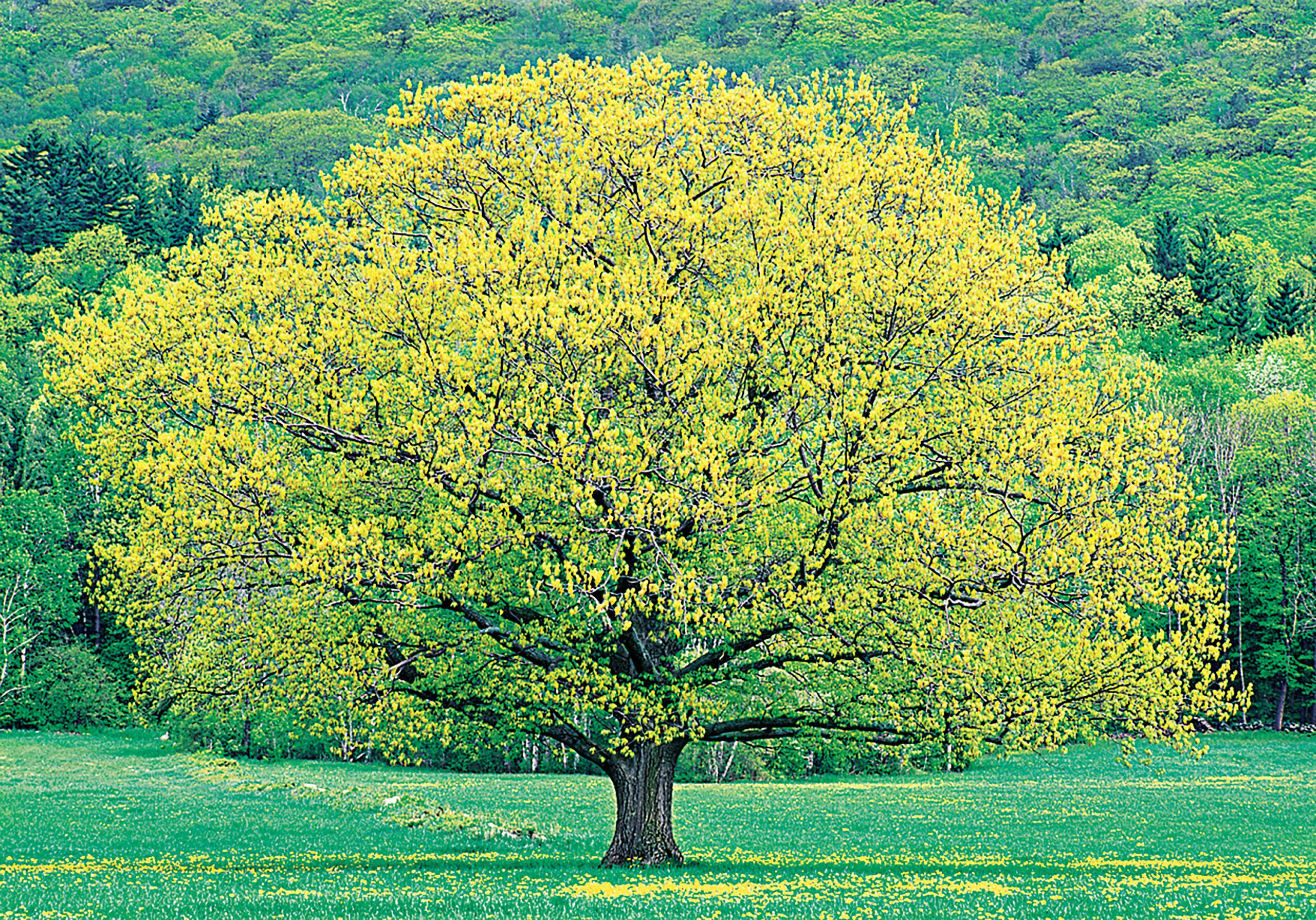
This classic shade tree has a broad crown and thrives in moist, well-drained, acidic soil. Its impressive growth rate and sturdy structure make it an excellent choice for your yard, and its strong wood resists breakage from wind and storms. The leaves of the Northern Red Oak turn a charming red in the fall, adding seasonal interest.
Avoid planting these trees in California and Oregon, as they can fall prey to sudden oak death disease. For those in California’s foothills and interior valleys, the Valley Oak is a suitable alternative for zones 6–11. Both species can reach heights of 60–75 feet with a similar spread, creating expansive areas of shade.
Freeman Maple
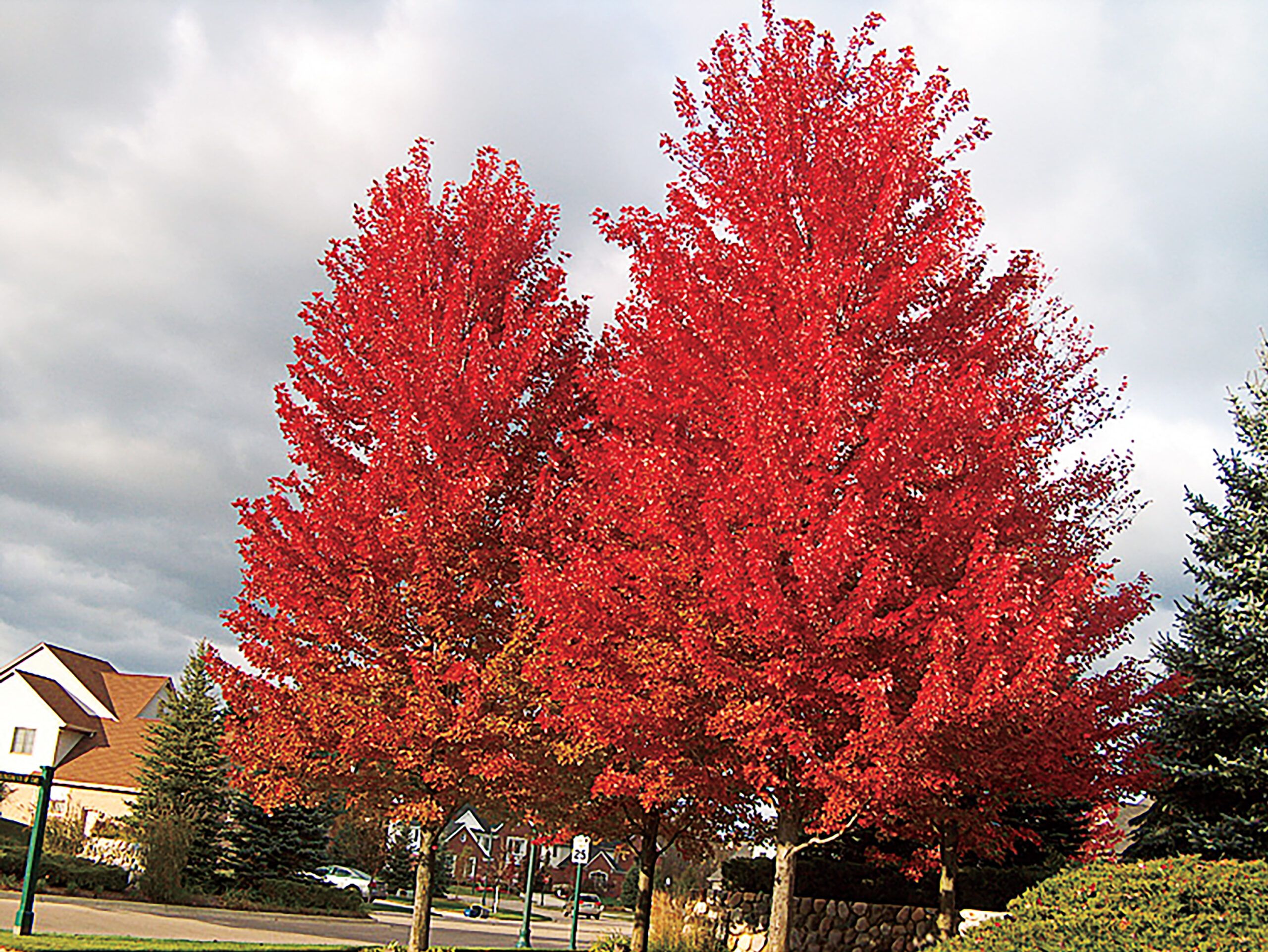
The Freeman maple tree can reach heights of 75–80 feet with a spread of 45–50 feet. It prefers full sun and moist, well-drained soil with a neutral pH. Freeman Maple trees are also adaptable to various soil types and conditions, making them versatile options for many landscapes.
The “Autumn Blaze” variety is particularly fast-growing, reaching 50–60 feet high with a broad oval crown spanning 40–50 feet. Its brilliant red-orange autumn foliage makes it a showstopper in any landscape. Additionally, the leaves retain their vibrant color longer than many other trees, thereby extending the display of fall beauty.
Green Vase Zelkova
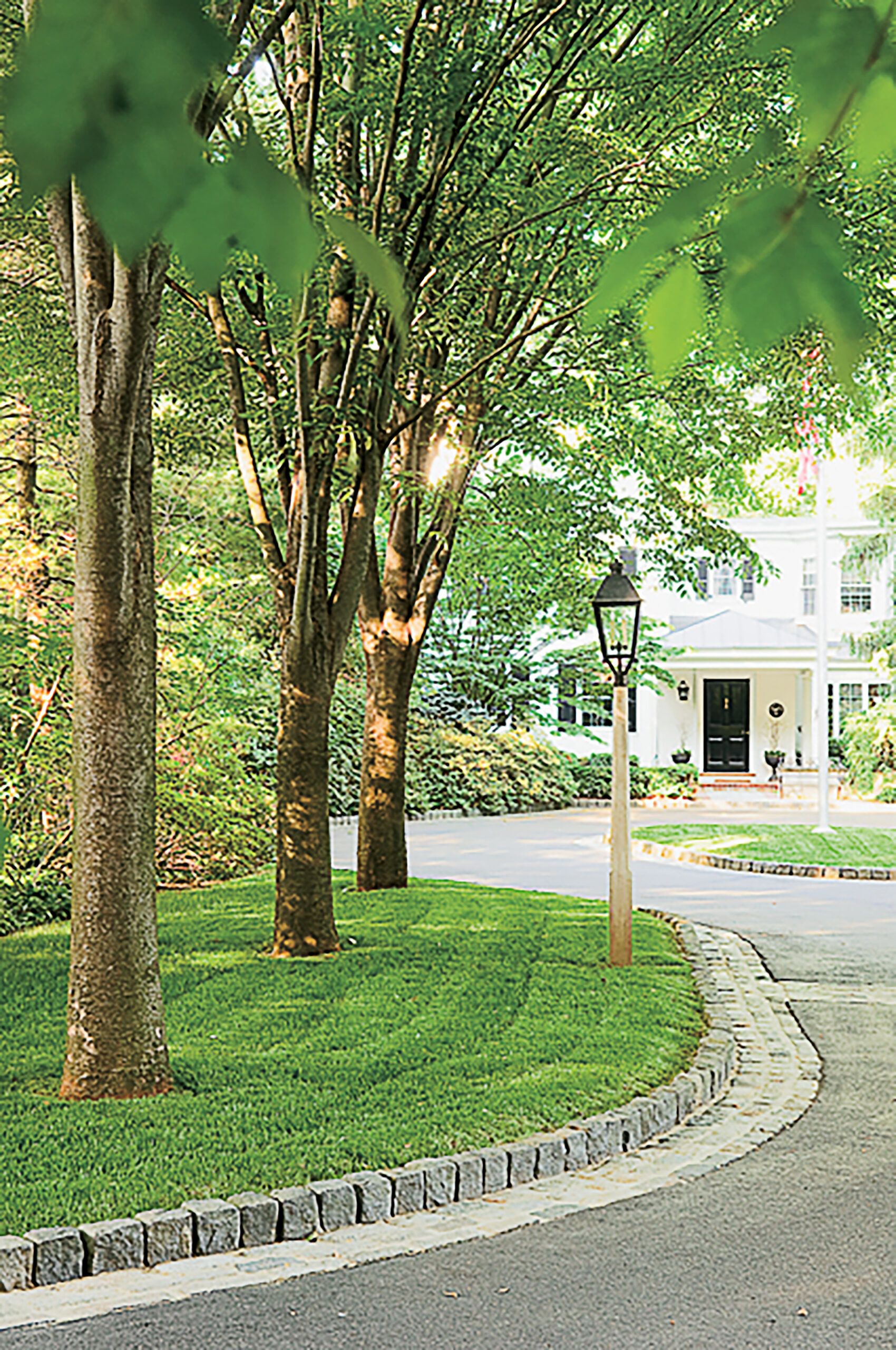
The Green Vase Zelkova is a vase-shaped tree that features upright arching branches and rich, dark green leaves that turn a beautiful bronzy maroon in fall. It can grow to 60–70 feet high with a spread of 40–50 feet.
It adapts well to several types of soil conditions and withstands many urban stressors, such as wind, pollution, and drought, making it the ideal street tree. It is particularly resilient and requires less maintenance once established.
Tulip Tree
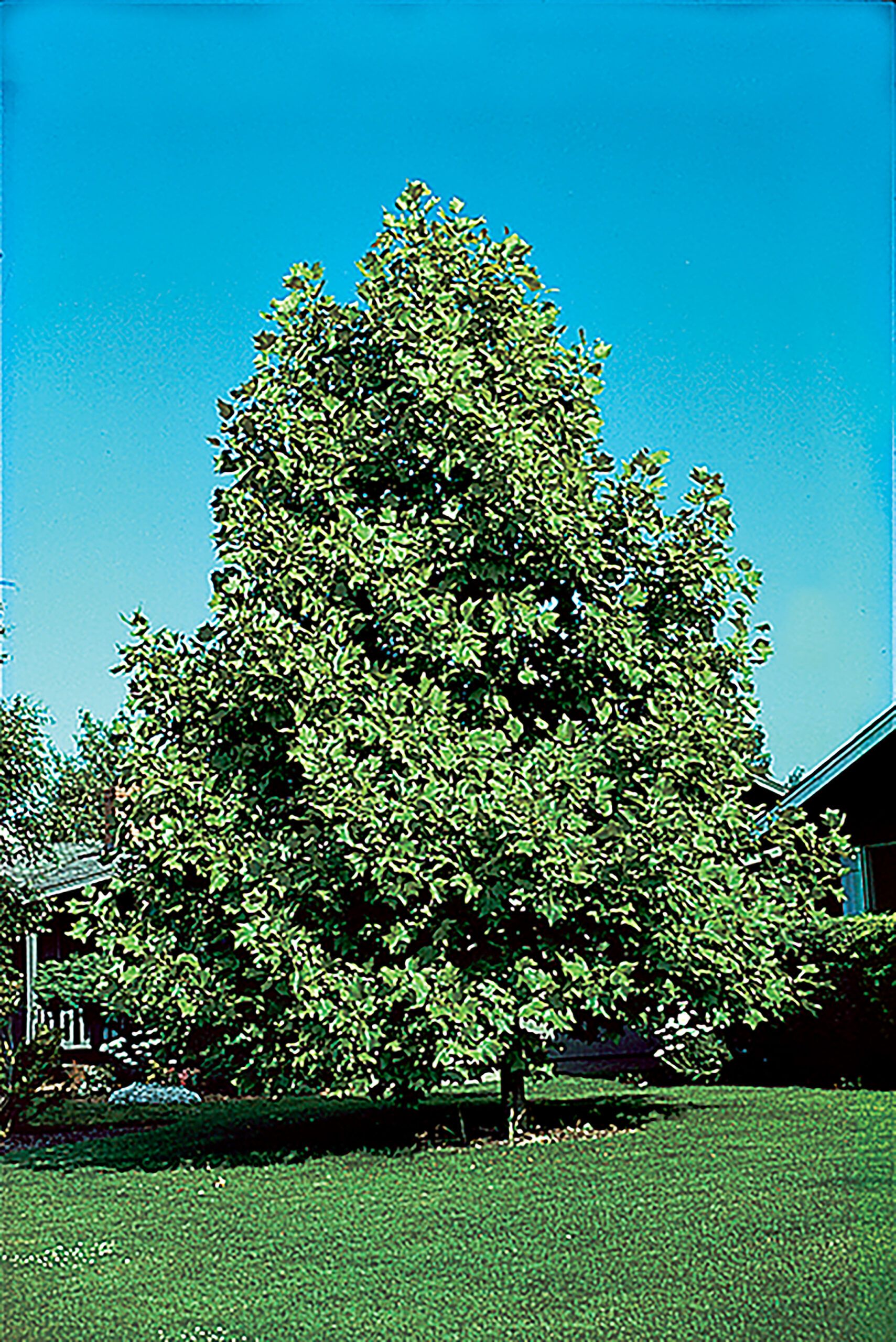
The Tulip Tree has a straight trunk and an oval crown and can reach impressive heights of 75–90 feet with a spread of 40–50 feet. Its unique, broad-lobed leaves and chartreuse tulip-shaped flowers in spring make it stand out in any landscape. The tree’s flowers also attract pollinators such as bees and butterflies, contributing to a thriving garden ecosystem.
Thriving in full sun and deep, moist, slightly acidic soil, the Tulip Tree offers both rapid growth and ornamental appeal. Its yellow fall foliage adds another dimension of beauty to your yard as the seasons change. It’s a hardy tree that requires minimal pruning to maintain its form, making it a low-maintenance shade solution.
Top Fast-Growing Privacy Trees
Privacy trees serve multiple purposes in the landscape, from blocking unwanted views to creating windbreaks. You can plant these versatile trees in rows, groups, or by themselves. Each tree offers a unique set of characteristics that cater to different needs and preferences.
Dawn Redwood
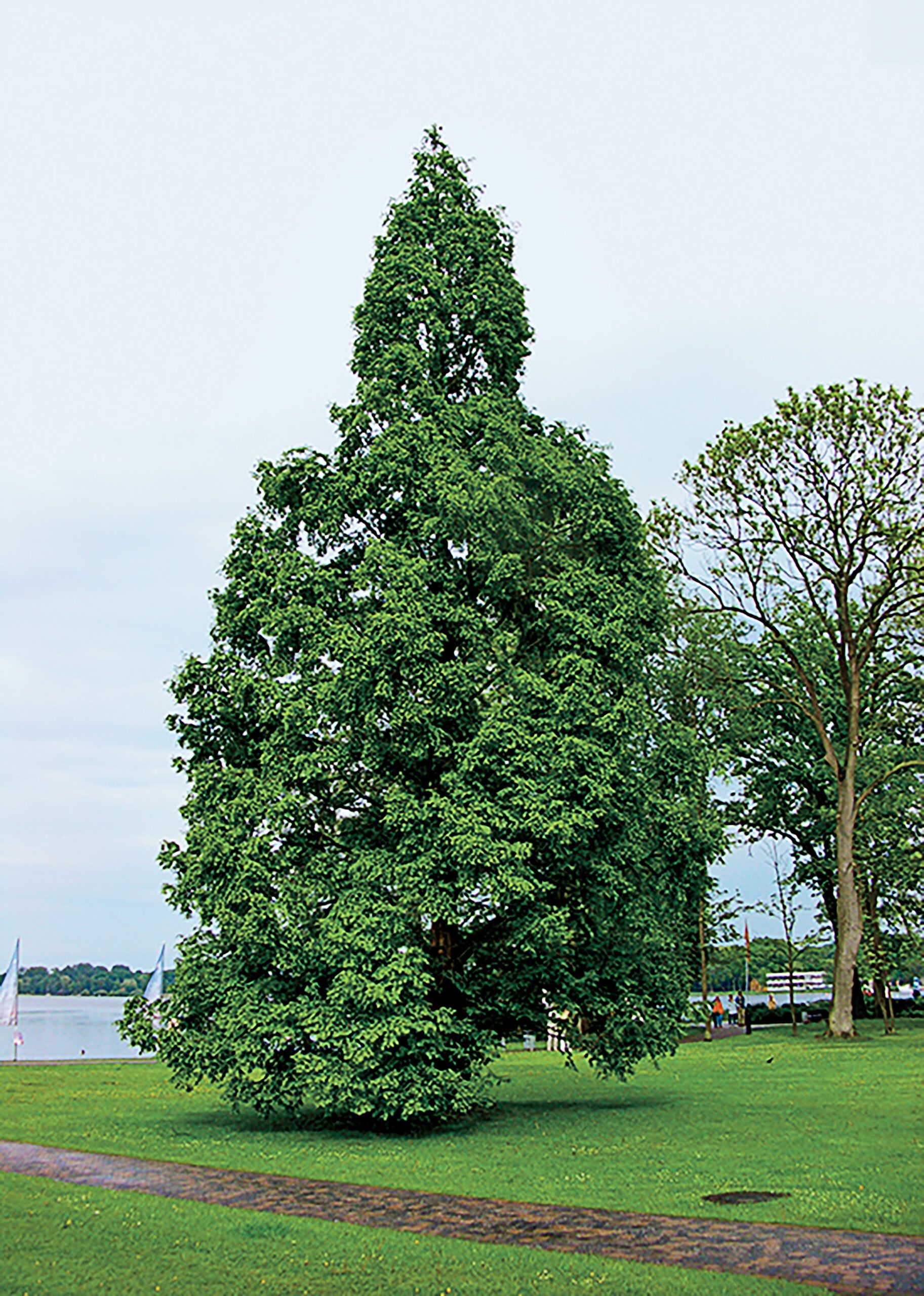
The Dawn Redwood is a deciduous conifer that features feathery green needles that turn a russet-orange in the fall—making for a stunning seasonal display. Its pyramidal shape and rapid growth rate make it an excellent privacy screen and wind barrier, when you plant several in a row. Additionally, the Dawn Redwood has a unique ancient appearance that makes it a conversation piece in any garden.
Reaching heights of 70–100 feet with a spread of 25 feet, the Dawn Redwood thrives in moist, well-drained, slightly acidic soil and full sun. Its striking, deep-fluted bark adds year-round interest to your landscape. This tree is also resistant to pests and disease, ensuring a healthy and beautiful addition to your property.
European Black Alder

The European Black Alder is an oval-shaped deciduous tree that grows 40–60 feet high with a spread of 20–40 feet, making it ideal for informal screens or windbreaks. It can also fix nitrogen in your soil, improving the health of nearby vegetation.
Tolerant of both full sun and partial shade, the European Black Alder thrives in wet soil where other trees might struggle. Its adaptability and fast growth rate make it a valuable addition to challenging landscape situations. Once established, it can tolerate short periods of drought, providing flexibility in variable climates.
Eastern White Pine
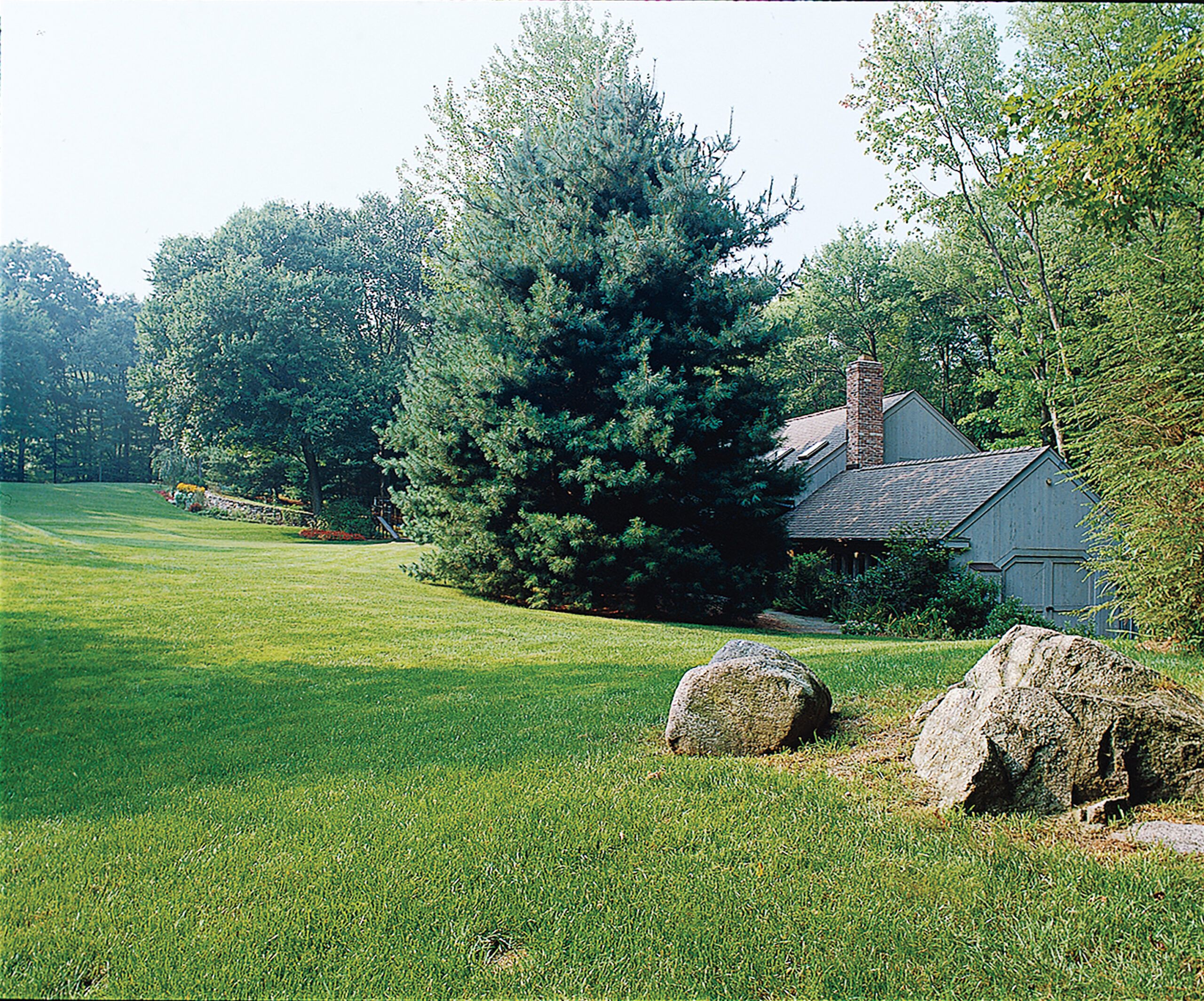
The Eastern White Pine has unique soft blue-green needles and a pyramidal shape when young. This pine can reach heights of 50–80 feet with a spread of 20–40 feet. It prefers moist, rich, well-drained, acidic soil and full sun. This tree provides privacy and acts as a sound barrier, reducing noise pollution in your yard—making it perfect if you live near a busy street.
For those seeking a narrower option, the “Fastigiata” variety grows to 50 feet high with a spread of only 20 feet, making it suitable for tighter spaces. Keep in mind that Eastern White Pine isn’t the best in windy locations, so choose your planting location carefully. It’s also resistant to pests and diseases, ensuring long-term growth and health without extensive upkeep.
Green Giant Arborvitae
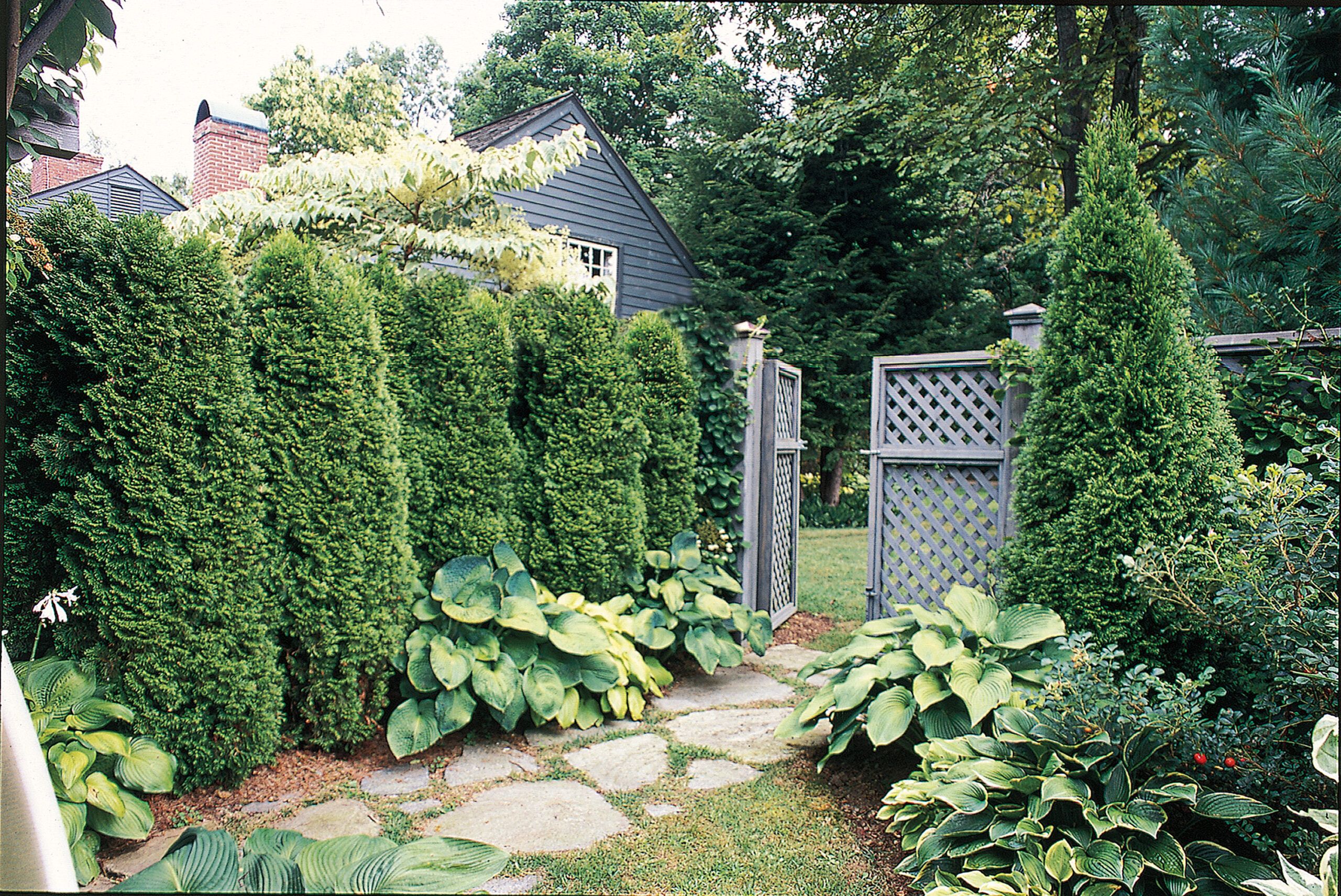
The Green Giant Arborvitae has a stellar growth rate of three feet or more per year, quickly establishing itself as an effective hedge or stand-alone specimen. Its dense foliage provides excellent year-round coverage, ensuring privacy and wind protection even in winter.
Reaching heights of 50–60 feet with a spread of 12–20 feet, the Green Giant maintains a uniform pyramidal shape without you needing to shear it. It’s adaptable to various soil conditions but prefers moist, well-drained soil and full sun for optimal growth. This tree is also deer-resistant, making it a durable choice if you live in an area with high wildlife activity.
Top Fast-Growing Ornamental Trees
Ornamental trees add visual interest and seasonal beauty to your landscape. These trees give your home a multi-seasonal appeal through flowers, striking bark, or impressive structure. Each tree brings a unique charm to your garden.
Sargent Cherry
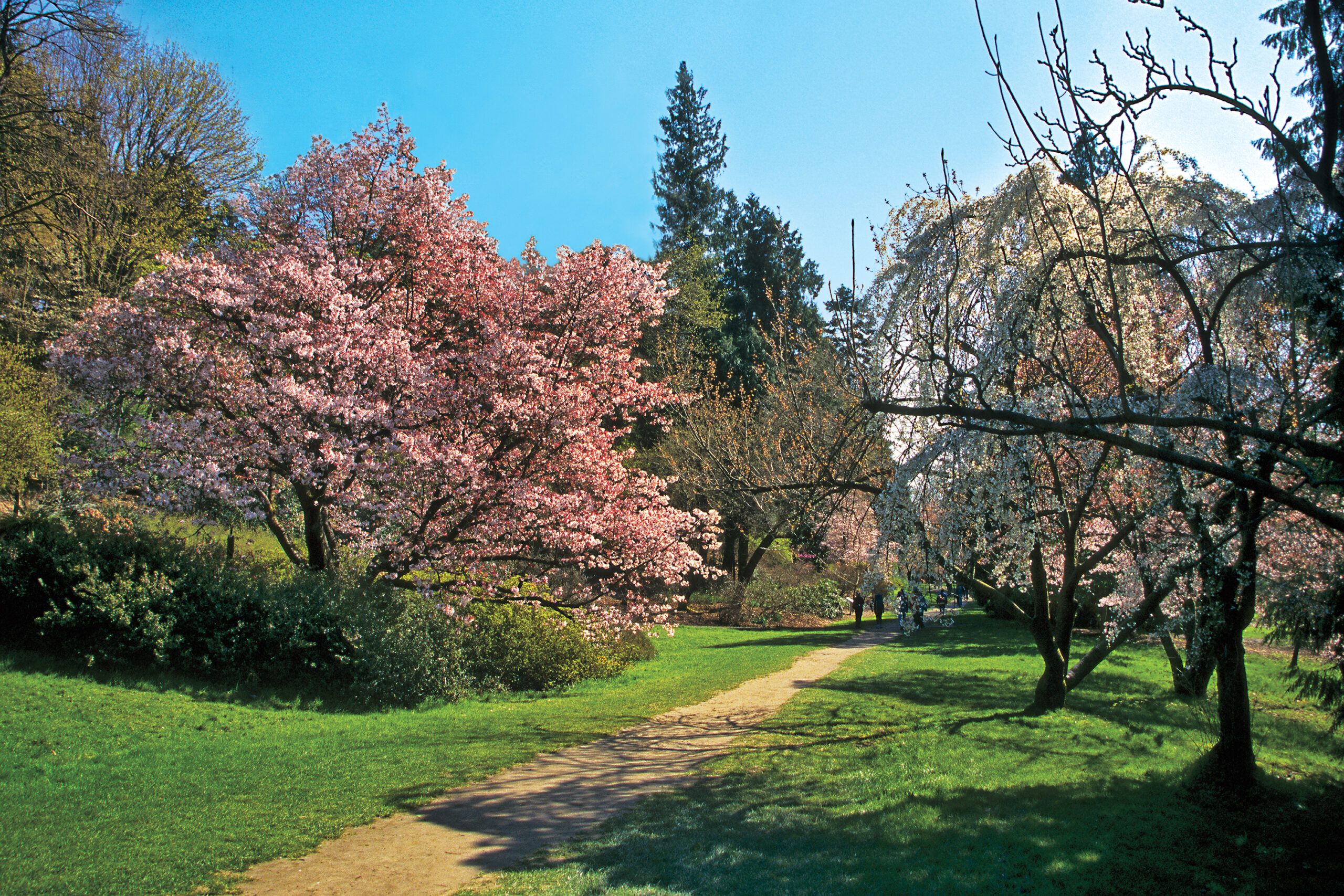
The Sargent Cherry has clouds of pink flowers in early spring and provides an orange-red fall color with shiny, reddish-brown bark. Growing 20–30 feet high and wide, it’s perfect for smaller landscapes or as a focal point in larger yards. Its moderate size also makes it suitable for urban environments where you might have less space.
Thriving in full sun and moist, well-drained, acidic to neutral soil, the Sargent Cherry attracts birds with its small, dark summer fruit. This tree needs relatively low maintenance, making it ideal for busy homeowners.
Heritage River Birch
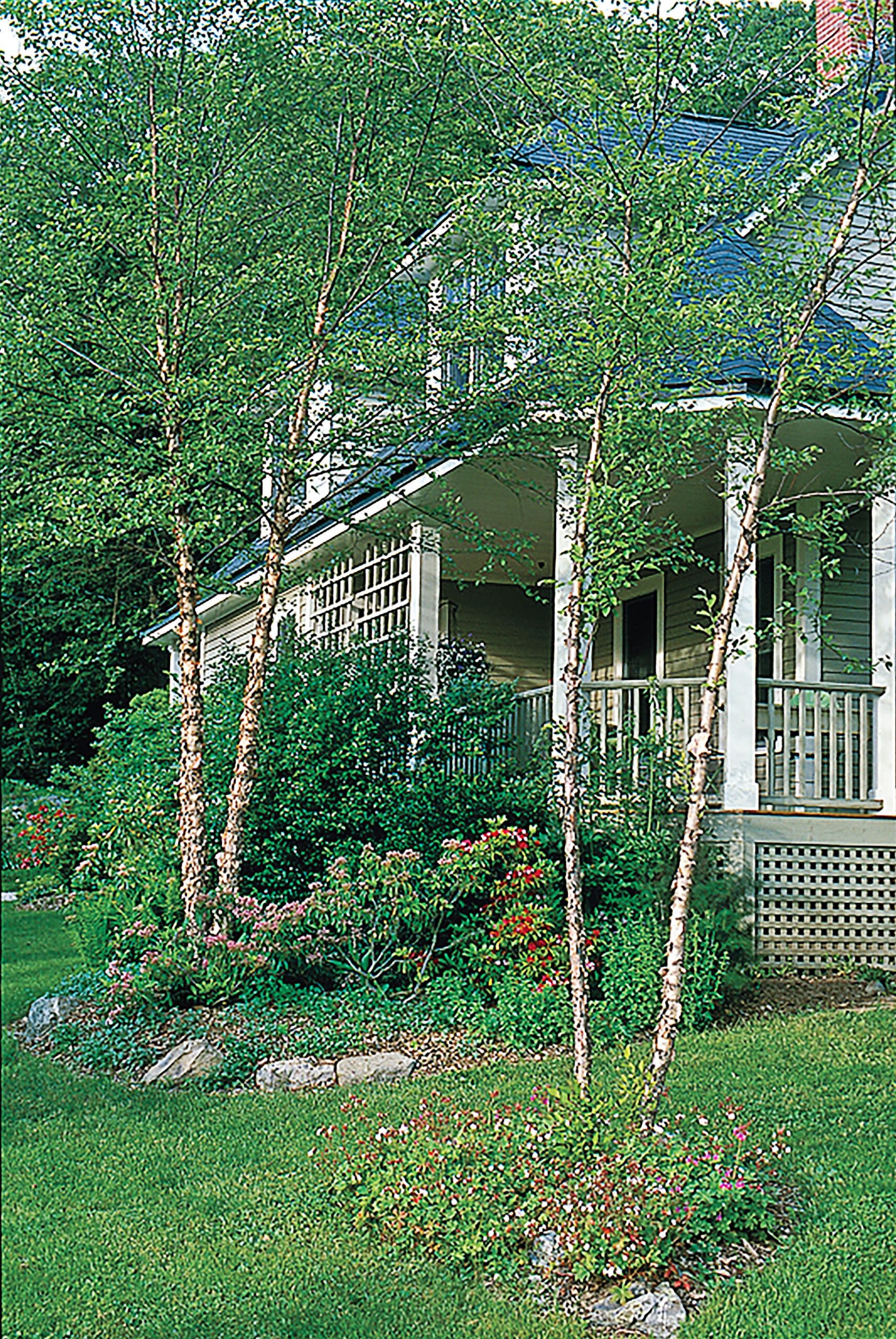
The Heritage River Birch is a fast-growing, multi-stemmed ornamental tree that develops an irregular crown. Its leathery green leaves turn yellow in the fall, while its exfoliating salmon-white to brownish bark makes it stand out all year long. Its ability to adapt to different soil types contributes to its reputation as a robust and reliable tree.
Growing 40–60 feet high and wide, the Heritage River Birch does best in moist, acidic soil and partial shade. Its tolerance for wet conditions makes it an excellent choice for areas prone to occasional flooding or near water features. This tree’s strong branches are resistant to breaking, making it a resilient choice for regions with heavy thunderstorms and high winds.
Sweet Bay Magnolia
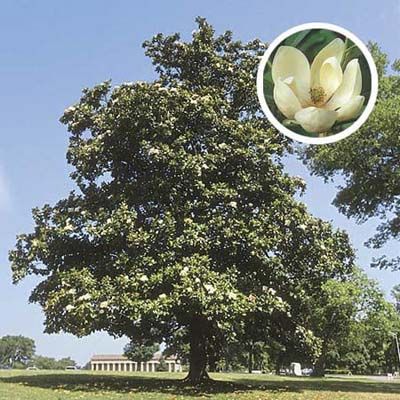
The Sweet Bay Magnolia grows lustrous dark green leaves with silvery undersides. They are deciduous in the North and evergreen in the South. The tree produces lemon-scented creamy white flowers in spring and early summer, adding fragrance to your landscape.
In northern regions, it typically grows 10–20 feet high and wide, while in the South, it can reach up to 60 feet high. The Sweet Bay Magnolia grows best in moist, acidic soil in sun to partial shade, making it adaptable to various landscape situations.
Natchez Crepe Myrtle
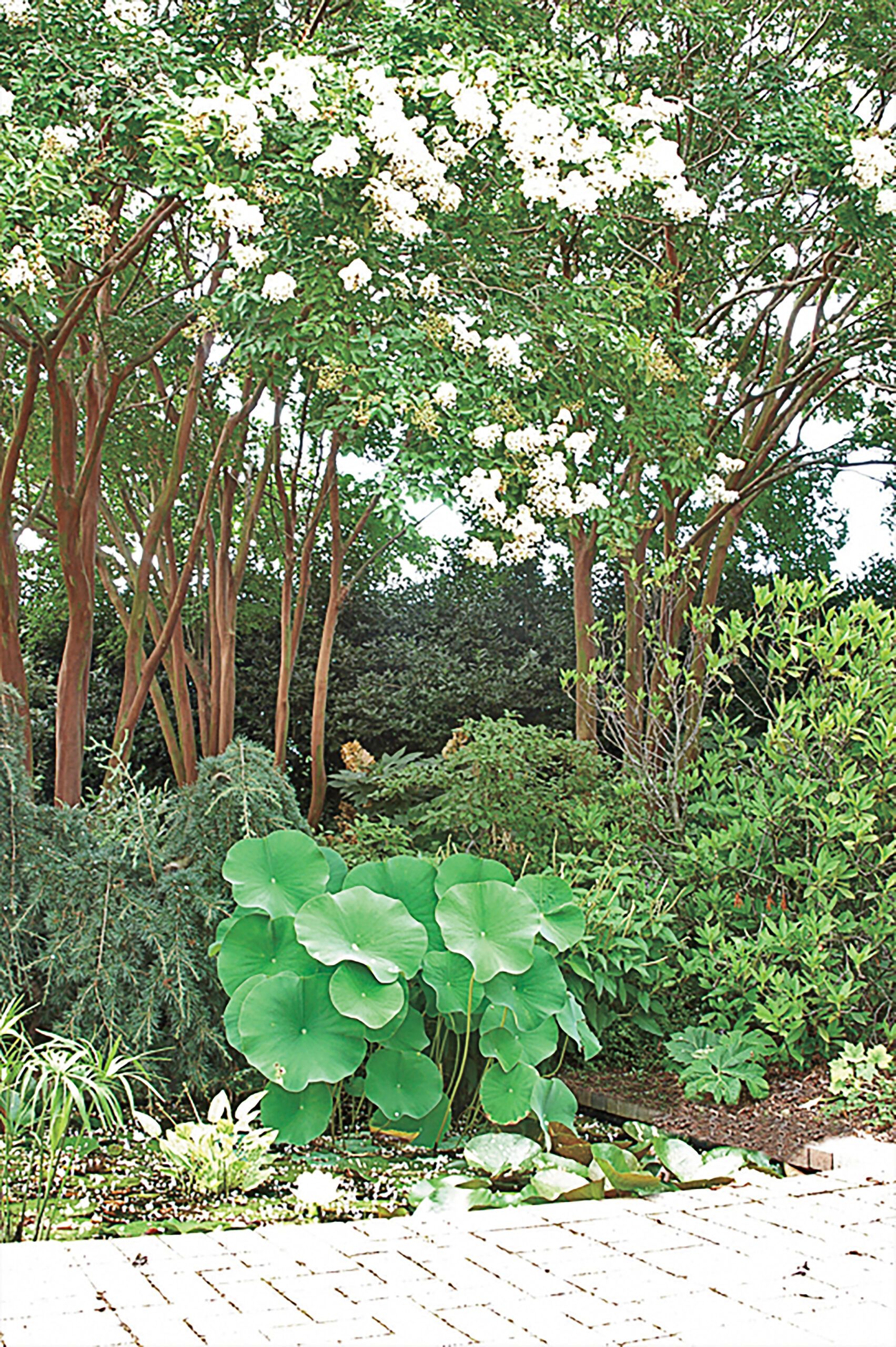
The Natchez Crepe Myrtle is a multi-stemmed tree featuring prolific recurring white flowers from late June to September—creating a long-lasting display. Its unique exfoliating cinnamon-brown bark adds beauty to your garden, no matter the season.
Growing 20–30 feet high and 15–35 feet wide, the Natchez is an excellent choice for curbside plantings where it won’t interfere with utility lines. For those seeking an even larger variety, the Japanese Crepe Myrtle grows white flowers and can stretch 40–50 feet high. The hardy nature of the crepe myrtle ensures durability in various climate conditions.
Our Conclusion
When selecting a fast-growing shade tree, consider factors such as your climate zone, soil conditions, and the amount of space you have. Always check your property’s plant hardiness growing zone before making a selection. And keep in mind, adequate watering and nutrients can significantly impact your tree’s growth rate, especially in its early years.
Need help with lawn care or pest control? Here are a few of our favorite resources.

